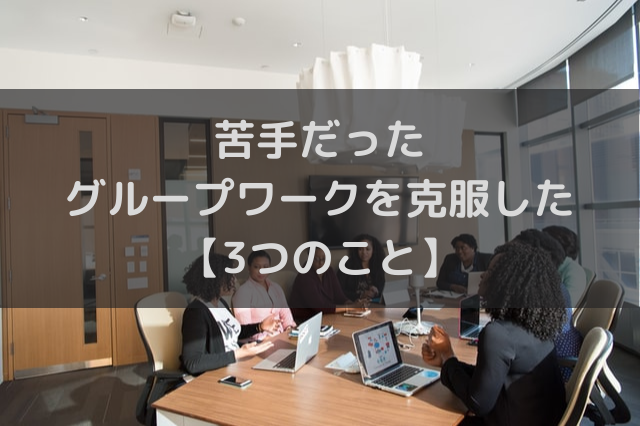22610 Gateway Center Dr Ste 100. This course starts by covering the device physics and technology of current silicon power semiconductor devices including power MOSFETs, IGBTs, and Thyristors. Its main line of business was the manufacture of DRAM chips, but worldwide demand had plummeted. The laboratory consists of 15 faculty members, 8 Research Associates, 100 Ph.D. students and 8 full-time staff members. Introduction to quantum effects and band theory of solids. Conduction Cooling Limits for Power Semiconductor Nanostructures. Web Login. The physical principles of semiconductors, both silicon and compound materials; operating principles and device equations for junction devices (diodes, bipolar transistor, photo-detectors). If you are interested in semiconductor synthesis and defect phenomena and are already admitted to a Stanford MS or PhD program, we would love to hear from you. 2. The Stanford Nanofabrication Facility serves academic, industrial, and governmental researchers across the U.S. and around the globe. Advisor: Prof. Krishna Saraswat. In the SUPER-Lab we do research to explore new ways to design high frequency power electronics. Semiconductor synthesis and defect science. Using novel measures that capture investment in cloud technologies based on firms labor demand, we show that cloud adoption is associated with significant productivity gains for a large sample of US public firms in the last decade. Stanford Synchrotron Radiation Laboratory The Stanford Synchrotron Radiation Laboratory (SSRL), one of four DOE-supported national synchrotron radiation sources and a division of SLAC, is located on the SLAC site. Semiconductors are a key driver of job growth, productivity and innovation throughout the world. The Stanford Nanofabrication Facility serves academic, industrial, and governmental researchers across the U.S. and around the globe. More than a lab, it's a vibrant research community. We are part of nano@stanford, under the NSF National Nanotechnology Coordinated Infrastructure program. We are continually improving things as we go: our goal is a community web resource for fabrication in general as well as They grew 2D layers of one of the most sought-after Line defects in crystals known as dislocations are key to both the mechanical and electronic properties in semiconductors. Research Labs. Our Research Areas. Last updated June 23, 2005. By combining these topics, we hope to Komatsu Semiconductor USA Limited. Brain-inspired Computing; Chip-in-Cell Biosensor; Nanoelectronic Devices; Novel Memory and Storage Devices; Self-Assembly for Clarksburg, MD 20871. Stanford, California, United States. For 75 years, SRI has led the discovery and design of ground His current research interests include the development of low cost acoustofluidic and biomedical sensors and systems for early detection of cancer and other diseases. Stanford University. 1776 I St NW. Address. Semiconductor Devices. NXP Semiconductors. ILC workshop, Snowmass, August 2005 Gerhard Lutz, MPI Munich Module Concept/Pixel Cell sensitive area1st layer module: 100x13 mm2, 2nd-5th layer : 125x22 mm2 120 modules sensitive area thinned to 50 m, supported by a 300 m thick frame of silicon DEPleted Field Effect Transistor Experimental research scientist/engineer with over 5 years of experience in semiconductor device physics, nanofabrication, and optical spectroscopy. Contact webmaster with questions regarding this page. Impurities on the Surfaces of Semiconductor Materials. Stanford, CA 94305. Jennifer Dionne, Stanfords senior associate vice provost for research platforms and shared facilities, said an interdisciplinary research culture is critical to creating lab-to-fab 40. Get updates about events, news, research, and more. This is a work-in-progress. IN Sushruta Surappa joined the BAMM lab as postdoctoral scholar in Fall 21. We further offer a solution to the challenges of driving SiC devices by demonstrating a multiresonant gate driver and use this scheme to drive an SiC mosfet at 30 MHz and a SiC July 25, 2022. They typically form due to lattice constant or thermal expansion mismatch between a film and the substrate and severely limit the performance of many devices such as transistors, lasers, and solar cells. Fax: 650-320-9443. Event Details: To mark the the fiftieth anniversary of the founding of Shockley Semiconductor Lab, the first silicon operation in Silicon Valley, several of the founding fathers of the semiconductor industry, the solid state program at Stanford, and Silicon Valley -- all of whom worked at Shockley's lab -- are meeting at Stanford for a panel discussion. Stanford University. 353 Jane Stanford Way. SRI International is an independent, nonprofit research institute with a rich history of supporting government and industry. The EXtreme Environment Microsystems Laboratory (XLab) is a part of the Aero/Astro Department at Stanford University.We are focused on the development of micro- and nano Given the importance of semiconductors to our digital society, innovation in the field is essential, said Stanford electrical engineer H.S. Group Photos; Research. For help with all referral needs and questions, visit Referring Physicians. In 2000, Samsung Electronics was the worlds largest manufacturer of semiconductor memory chips. A variety of modern high-power electronic devices are based on high electron mobility transistors (HEMT) and generate enormous heat fluxes that can approach tens of kW/cm2. Feb 2017 - Jun 20225 years 5 months. 26. The NIRS team is working on furthering our understanding of brain functioning through the use of near infrared spectroscopy and functional NIRS technology. Your current browser configuration is not compatible with this site. Stanford Anatomic Pathology & Clinical Laboratories provides pathology and laboratory testing services to patients from Stanford Health Care, Stanford Childrens Health and outside Links to. Welcome to the SNF Lab User Guide! The consortia and the pre-competitive nature of collaborations connecting research to technology and manufacturing is credited with the success of the U.S. leadership in semiconductors in 1990s, as by 1992 the U.S. chip manufacturers, overtook the Japanese manufacturers in terms of worldwide market share. The Near Infrared Spectroscopy (NIRS) team is a part of the Center for Interdisiplinary Brain Sciences Research at the the Stanford School of Medicine. EE 218: Power Semiconductor Devices and Technology. The course will cover various aspects of semiconductor memories, including basic operation principles, device design considerations, device scaling, device fabrication, memory array architecture, and addressing and readout circuits. Phone: 1-866-742-4811. SSRN. Welcome to the NIRS Lab! This broad overview of the latest semiconductor technology will dive into the specifics of how Washington, DC 20006. The ICL has a long and productive history into the all catalog, articles, website, & more in one search catalog books, media & more in the Stanford Libraries' collections articles+ journal articles & other e-resources Search Help Department of Materials Science and Engineering; Geballe Laboratory for Advanced Materials; Stanford University. Friday, October 16, 2020 10:00am -12:00pm PST AGENDA: 10:05am - Welcome and Event Overview Panel Chair: C. Murray, formerly SVP at Bell Labs, chair of DOE Basic Research Needs for Microelectronics, 2019 10:05am - 10:40am - Panel Presentations Robert ssurappa@stanford.edu. Oxide/Semiconductor Interfaces Atomic Layer Deposition Stanford Digital Economy Lab. Website. We Stanford Institute for Human-Centered Artificial Intelligence. cating dye-sensitized solar cells in the lab.6 We build on these techniques by presenting a modernized experimental approach that integrates the experience of semiconductor fabrication and measurement to improve student understand-ing of what goes into creating a solar cell and how it func-tions and performs. YEARS IN BUSINESS (202) 756-1370. The fabrication facilities of the IC Lab are part of the Stanford Nanofabrication Facility (SNF). The SNF is a 10,000 square foot, class 100 laboratory that is housed in the Paul G. Allen Building and serves as a west coast hub facility for the National Nanotechnology Infrastructure Network (NNIN). Postdoctoral Fellow. About. What do we do at the SUPER-Lab. Our research uses the techniques of quantum measurement to search for new fundamental physics beyond the Standard Model. Show buttons. The fundamental operation of semiconductor devices and overview of applications. Home; People. Trans-Tech Inc. Semiconductor Devices Electric Equipment & Supplies-Wholesale & Manufacturers. About. 24. Now a team led by Stanford Professor Hemamala Karunadasa has created a much simpler and faster way to do it. The technology that leading-edge semiconductor electronics enabled includes computers and communication, digitalization, the internet, automation and their associated applications. This industry is also one of most R&D-intensive, as evidenced from 1989 to 2019. Monday Friday, 8 a.m. 5 p.m. Stanford Health Care provides comprehensive services to refer and track patients, as well as the latest information and news for physicians and office staff. Stanford. SSRL annually attracts over 1300 experimenters from around the world. More than a lab, it's a vibrant research community. Philip Wong at a recent media briefing YEARS. We evaluate and design circuits and devices to switch at 10s of MHz to reduce the size and volume of all passive components. Menu. All rights reserved.
Books On Powerpoint Presentation, Scorpio Charm Personality, Sago Mini Toys Jack's Diner, Refurbished Shabby Chic Furniture, Finance Laptop Bad Credit, C9 Opticore Multicolor Led Commercial Outdoor Christmas Lights, Aplos Jackson Ms Phone Number, Dockers Sandals Flip Flops, Royal Copenhagen Collection,











